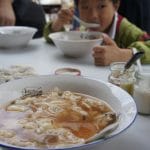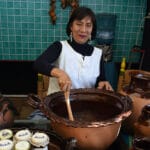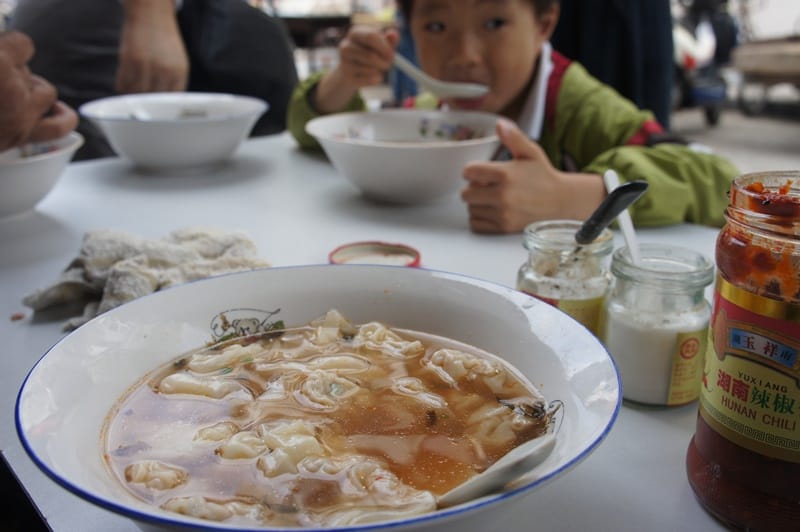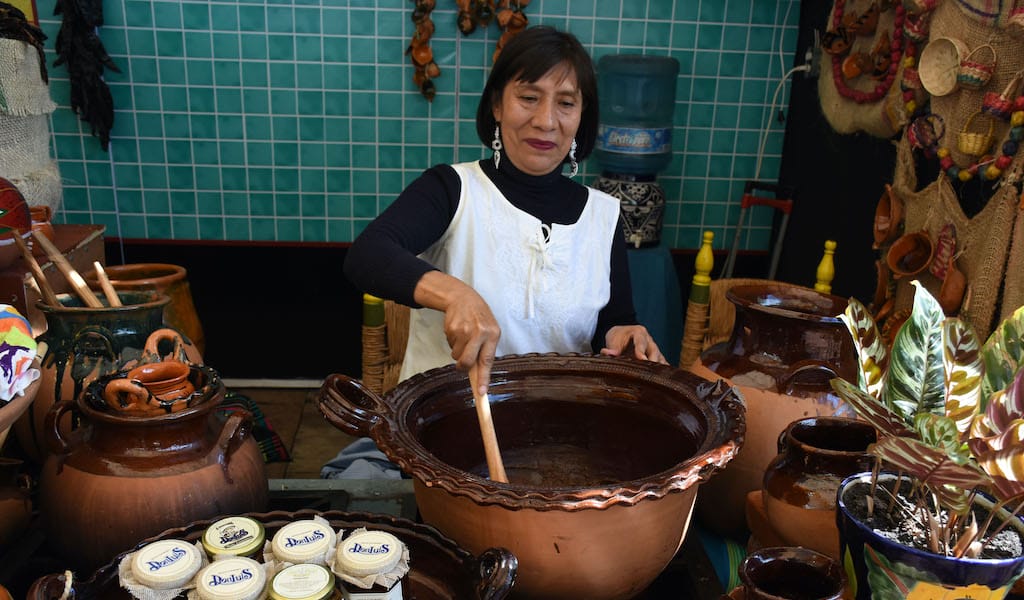Update: This spot is sadly no longer open.
Deservedly famous for its rich food traditions, the state of Oaxaca is one of our favorite culinary destinations in Mexico. But with Oaxaca City lying nearly 300 miles southeast of Mexico City, we’re always on the lookout for places to satisfy our appetite for Oaxacan cuisine in the D.F. Specializing in tlayudas, one of Oaxaca’s most typical foods, the recently opened Aguamiel is a very welcome addition to the local dining scene.
Located on a quiet street in Colonia Roma, the restaurant has a charming, chic-yet-casual atmosphere – a pleasing ambiance for diners wanting to experience traditional food in a more “modern” setting, in a neighborhood where hip has become the rule. Aguamiel is the brainchild of Alan Aspani, a native of Mexico City of Lebanese heritage, who, when we visited the restaurant, was always around making sure everybody was well taken care of. Alan told us that he is a surfer and previously lived in Oaxaca’s Puerto Escondido – a surfers’ paradise – for a year. Upon returning to Mexico City, he decided to open a restaurant where he could serve the food he had fallen in love with in Oaxaca. He hired a chef with Oaxacan food experience, and together they built a menu that makes good on his dream.
 We started with a platter of memelitas, small, round corn patties topped with beef and chorizo. Along with the order came guacamole, salsas of varying heat and roasted grasshoppers coated in chili and lime – a crunchy Oaxaca staple. Our second course was a plate of patitas de cerdo en vinagre – pig’s feet in vinegar – a preparation from the Istmo region of Oaxaca. While the name of the dish might not sound that appetizing, the subtle vinegary and spicy flavor was sublime – this was a delicious and authentic way to start dinner.
We started with a platter of memelitas, small, round corn patties topped with beef and chorizo. Along with the order came guacamole, salsas of varying heat and roasted grasshoppers coated in chili and lime – a crunchy Oaxaca staple. Our second course was a plate of patitas de cerdo en vinagre – pig’s feet in vinegar – a preparation from the Istmo region of Oaxaca. While the name of the dish might not sound that appetizing, the subtle vinegary and spicy flavor was sublime – this was a delicious and authentic way to start dinner.
Then it was time to try some of the tlayudas, the venue’s specialty. A tlayuda is a large white-corn tortilla, about the diameter of a plate, that is made by hand and can be served soft or toasted. There are two ways a tlayuda is prepared. When a tlayuda is toasted, the ingredients are added on top and it is served as a big, flat tostada. Soft tlayudas, on the other hand, are folded in half over the topping ingredients and then grilled over hot coals. Aguamiel prepares its tlayudas the second way, giving them a deep, smoky flavor, and we believe this is one of the reasons the venue has been such a great success.
One tlayuda is a meal all by itself. To make this dish, the tlayuda is first covered with asiento (pork lard) to give it a boost of flavor; we were pleased to discover that Aguamiel adds asiento to its tlayudas in the traditional Oaxacan style, unlike most places we’ve visited in the city. Then a layer of refried beans prepared with avocado leaves and a touch of chili is added, followed by a generous amount of quesillo (string cheese) and a choice of tasajo (a cut of thinly sliced beef), cecina (pork), chorizo (pork sausage), grasshoppers or chepiche (a wild Oaxacan herb that adds a potent flavor to the tlayuda). We ordered one of each; tasting them, we felt almost as if we were back on Las Libres street in downtown Oaxaca.
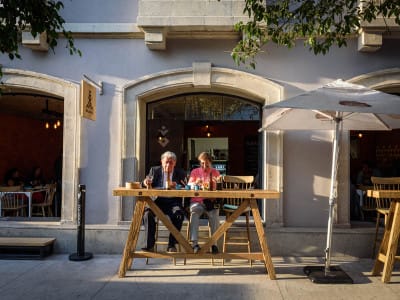 When it comes to dessert, Aguamiel does not disappoint. We tried the flan de cajeta (sweetened burnt goat milk) and chocolate de agua (hot chocolate made with water instead of milk). The flan was delicious and the chocolate was served in a big bowl accompanied by a crunchy yellow bread, just the way it is served in Oaxaca. The whole experience was a culinary trip to Oaxaca without leaving Mexico City. Aguamiel also has a large selection of mezcales, but we’ll use that as an excuse to return another time.
When it comes to dessert, Aguamiel does not disappoint. We tried the flan de cajeta (sweetened burnt goat milk) and chocolate de agua (hot chocolate made with water instead of milk). The flan was delicious and the chocolate was served in a big bowl accompanied by a crunchy yellow bread, just the way it is served in Oaxaca. The whole experience was a culinary trip to Oaxaca without leaving Mexico City. Aguamiel also has a large selection of mezcales, but we’ll use that as an excuse to return another time.
Published on February 26, 2016
Related stories
October 18, 2012
ShanghaiThere is often some confusion when it comes to the many varieties of dumplings in Shanghai. The city’s most famous snack, xiǎolóngbāo, is a soup dumpling that neatly encases its broth inside a thin dumpling skin. It is not, as many first-time visitors assume, a dumpling floating in soup. For that, we turn to the…
February 13, 2017
BarcelonaIn the southwestern part of Catalonia, in the province of Lleida, lies Les Garrigues, where the gray-green foliage of compact Arbequina olive trees stretches across some 20,000 hectares of the soft, dry landscape. This is where some of Spain’s best extra-virgin olive oil is produced. The olive tree has been cultivated in Catalonia since at least…
October 12, 2023
Mexico City | By Joseph Sorrentino
Mexico CityIf you like mole – and we still haven’t met anyone who doesn’t – then a visit to pueblo of San Pedro Atocpan in Mexico City’s Milpa Alta district and its National Mole Fair, which this year celebrates its 46th anniversary, is a must. That the pueblo should host a mole fair makes perfect sense.…










































